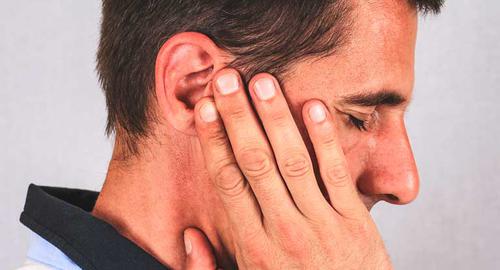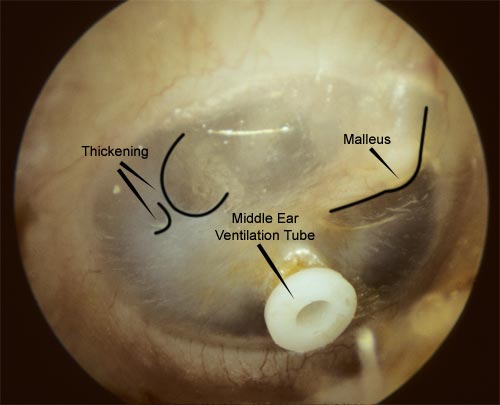Table of Content
Apple cider vinegar will help you in this situation. This kind of vinegar has antimicrobial properties in it, and it helps to kill the infection-causing microbes in your ear. You have to just mix one tablespoon of apple cider vinegar and warm water. Soak a cotton ball into this and insert it into your infected ear. Then lie down and let the cotton to soak up the fluid for a few minutes.
Fortunately, there are plenty of natural cough suppressants that you can try right now in... Boil a pot of water and then remove it from the stove. Using a dropper, place 2 to 3 drops in the affected ear and allow it to sit for 5 minutes. Place a few drops into the affected ear and allow it to sit for 5 minutes. Wrap the half-onion in a cotton cloth and hold it over the affected ear for 10 to 15 minutes.
Herbal treatments for drying out inner ear fluid
The best method for diagnosing fluid in the ear is examination of the ear using an otoscope or otomicroscopy. This procedure is very simple and involves pulling back the ear and inserting the tip of the otoscope into the ear. Experienced physicians may actually see either a fluid level behind the ear drum, a bubble, or that the ear drum is immobile.

Good hygiene practices will help decrease the chances of the infection spreading to others. Inner ear infection symptoms and signs like ear pain and nausea may be relieved with home remedies or over the counter medication. Some inner ear infections will need to be treated and cured with antibiotics or prescription pain or antinausea medication. Since outer ear infections (swimmer’s ear) are generally bacterial in the cause, this type of ear infection can be prevented by avoiding prolonged ear canal immersion. Numerous studies have shown that viruses cause middle ear infections.
Mediterranean Diet 101: Benefits, Drawbacks, Myths and More
Those with penicillin allergies will likely be given azithromycin or cefdinir. Having fluid in your ear can be caused by inflammation, mucous, a growth, or a structural problem in the ear that blocks the drainage of fluid from your auditory tube. OME is one of the most common reasons that children get fluid in their ears. There are about 2.2 million cases of OME in the United States each year.
Tug on your earlobe to quicken the process of drying. Any kind of allergies and respiratory infections can cause fluid build-up in the ear. Rest on your side, with the affected ear down against a towel, pillow, or cloth. You can even take a nap or try this overnight as you sleep. Do not do this if you think you have an ear infection. Create a vacuum with your hand to release the fluid.
How to remove water from your ear canal
You can repeat this remedy a couple of times per day.

Online that use a combination of urea and hydrogen peroxide, called carbamide peroxide, to unclog earwax in the ears. Lie on your side for a few minutes, with your head on a towel to absorb the water. Although swimming is often the cause, you can get water trapped in your ear canal from any exposure to water. If this happens, you may feel a tickling sensation in your ear. You may also not be able to hear as well or only hear muffled sounds.
Avoid using Q-tips, as these disrupt the natural movement of ear wax out of the ear canal that your body does on its own. Opt for surgery if the fluid can't be removed any other way. Since it can take a while for the ear to drain completely, they may place a tube in your ear.

Doctors can put small tubes into the eardrum that will help prevent ear infections. The tubes allow air to flow into the middle ear and fluid to drain. Preparing your child for this procedure will help comfort them, and knowing what to expect before, during, and after surgery is important as well. Although these ingredients are natural and safe, a doctor's visit is still recommended to professionally examine your ear problem. A fluid buildup in the ear can be due to serious ear problems, such as inner ear infections.
When the Eustachian tube becomes partially blocked, fluid begins to accumulate in the middle ear. Bacteria can then begin to accumulate within the liquid, which can result in an infection. If you are concerned about your ear health and how to get fluid out of your ear it makes great sense to invest in a digital otoscope to keep an eye on your outer ear. If the fluid in your ear was caused by an infection then your doctor can prescribe you an antibiotic. The most common antibiotic is amoxicillin-clavulanate unless you have a penicillin allergy.
Most of the time, fluid will leave your ears naturally. If it doesn't after 3-4 days, see a doctor, since stagnant fluid can turn into an ear infection. Yes, because the fluid may still be there and could later cause problems. Fluid that lasts a long time can damage the ear and require surgery.
Rarely, severe cases of swimmer’s ear will cause the ear canal tissue to become swollen shut. To treat this, an "ear wick" is placed in the ear to allow the antibiotic eardrops into the narrowed ear canal. If it feels like water in the ear, then you might be suffering from an ear infection due to fluid build-up. Tea tree oil can be used by those who feel fullness in the ear. It is because it has potent antimicrobial properties that fight off the microbes present in the ear.


No comments:
Post a Comment